Abstract
The growth of tobacco callus in culture (previously shown to contain gibberellin [GA]-like substances), and its ability to metabolize [3H]-GA20 were examined. Growth rates, in the presence and absence of exogenously applied GA, were examined in light and dark conditions. Dark-grown callus grew at a much faster rate than light-grown and [3H]GA20 was metabolized much more rapidly in darkness than in light.
[3H]GA1 was identified by combined gas-liquid chromatography/mass spectrometry as a major product of [3H]GA20, and was found to be a more potent promoter of tobacco callus growth than GA20.
Full text
PDF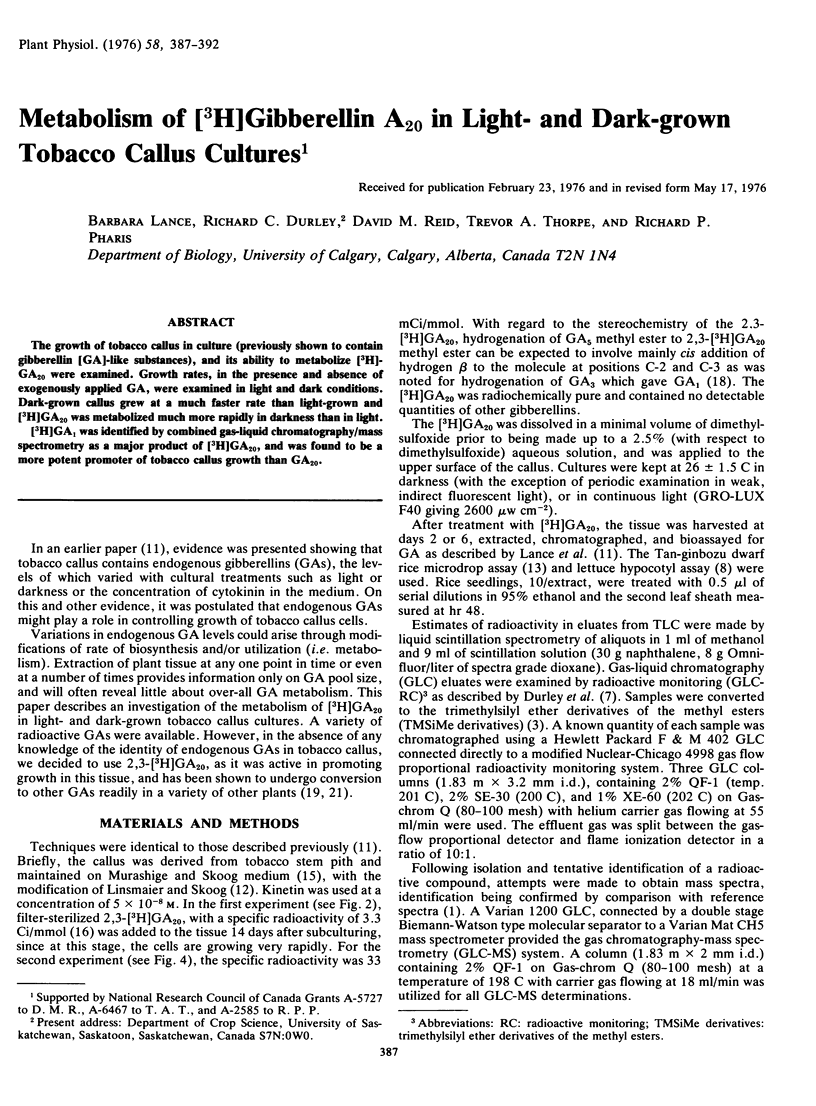
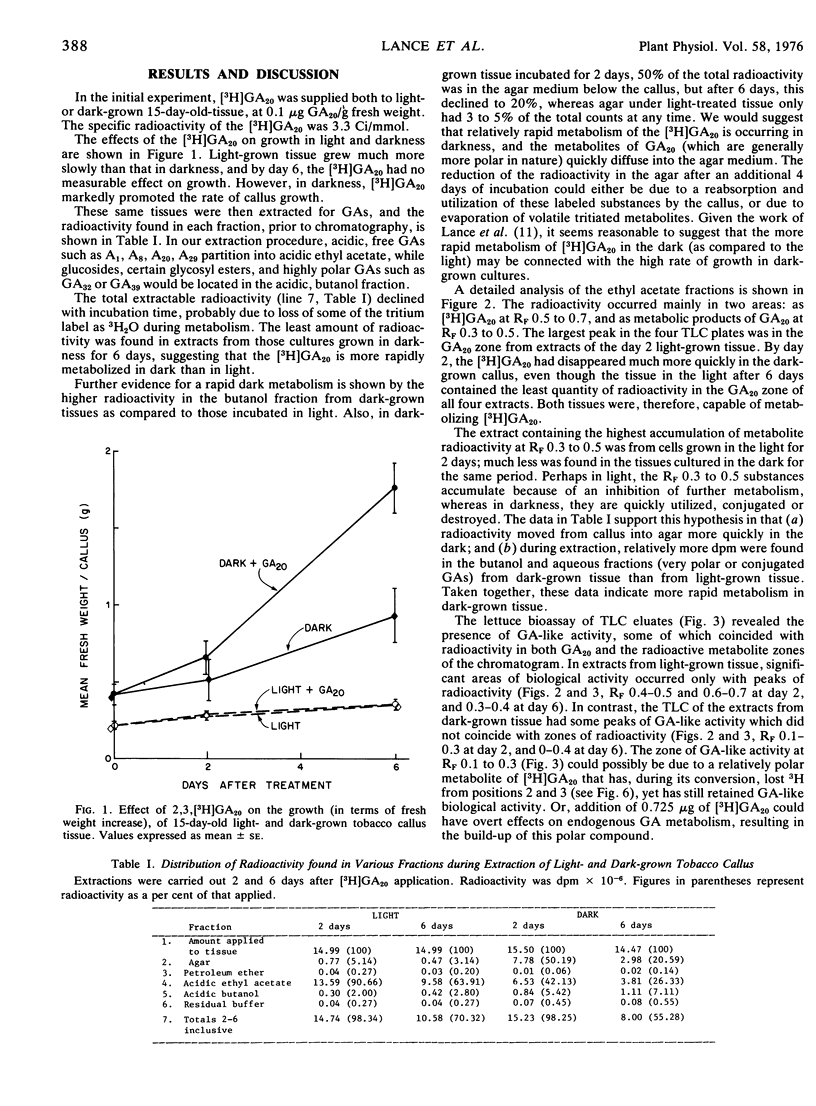
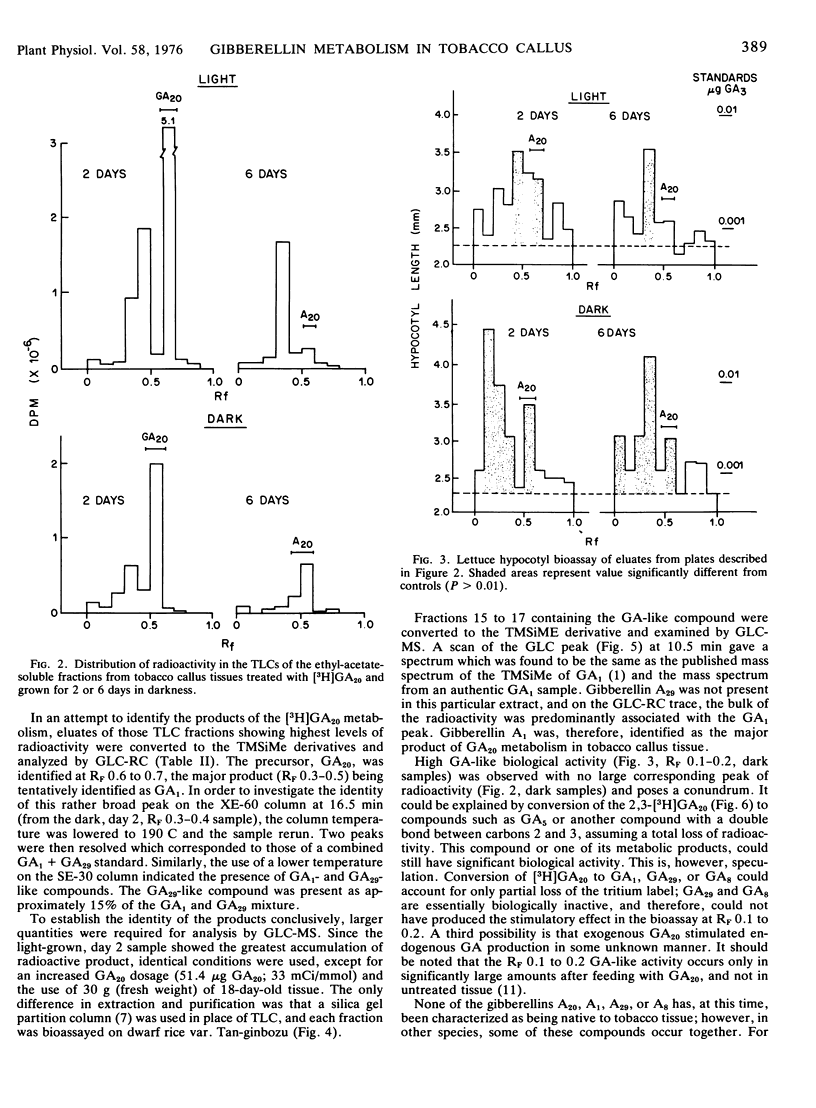
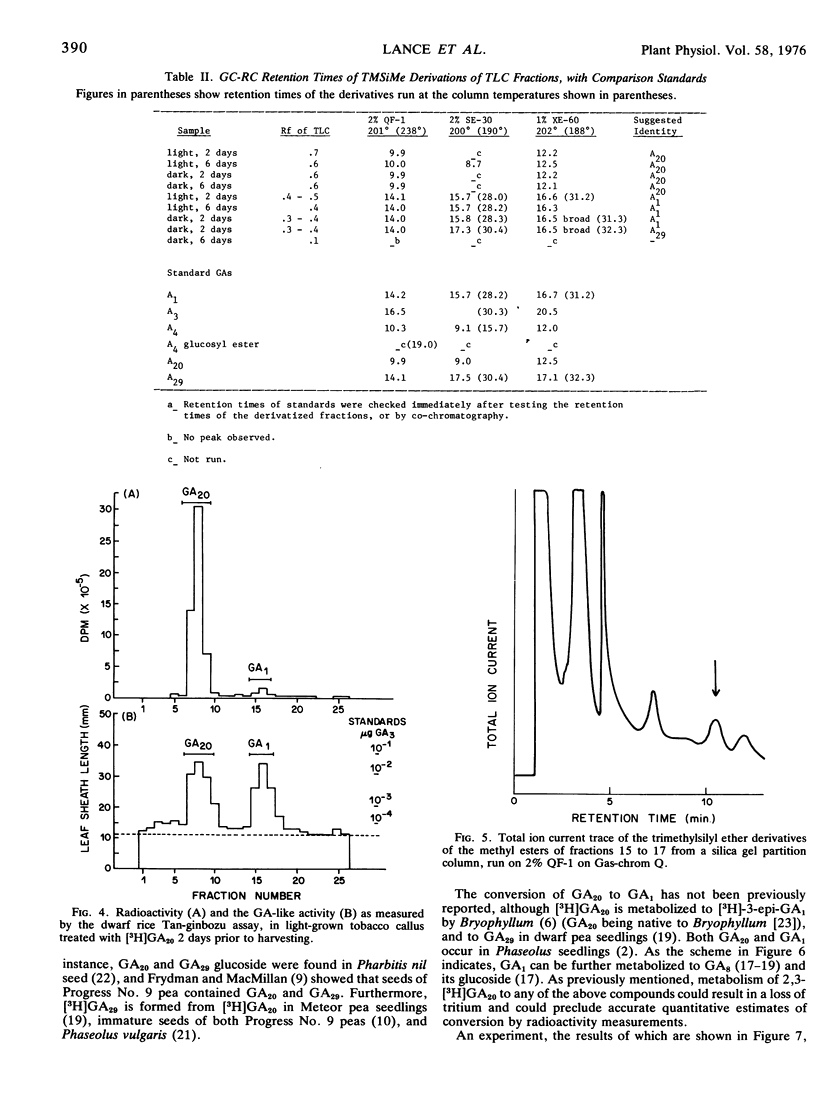
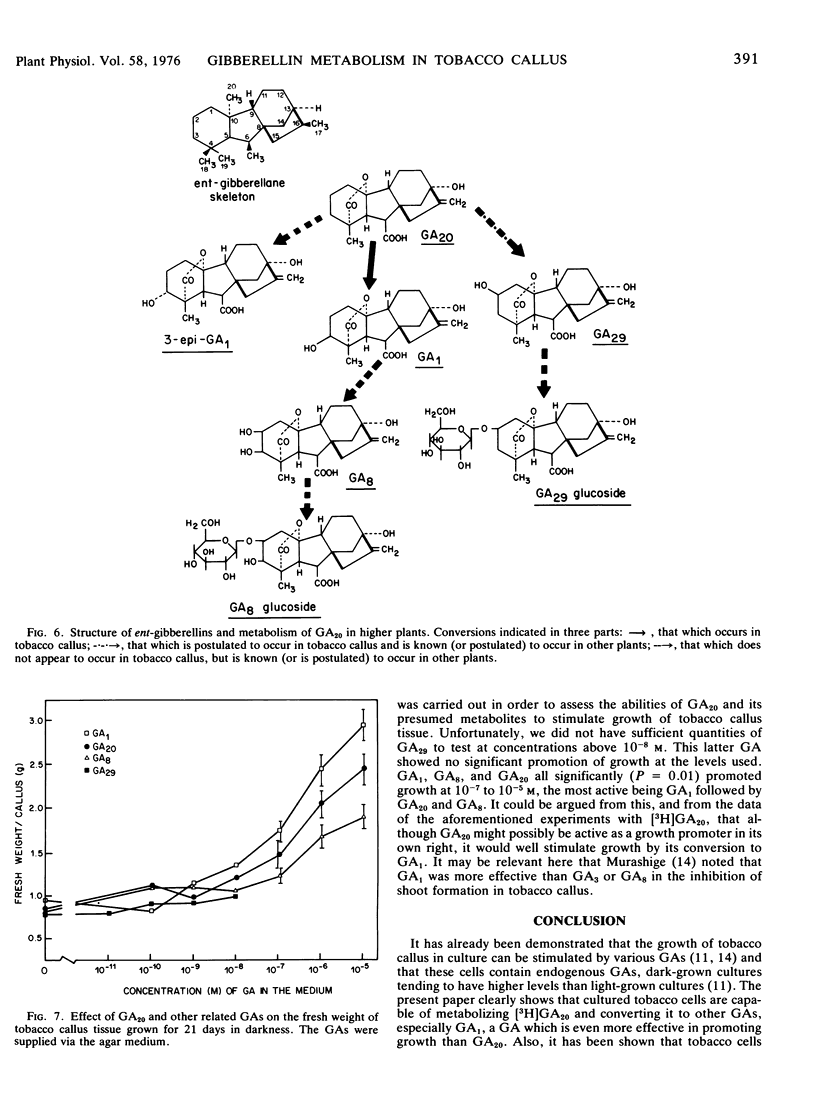
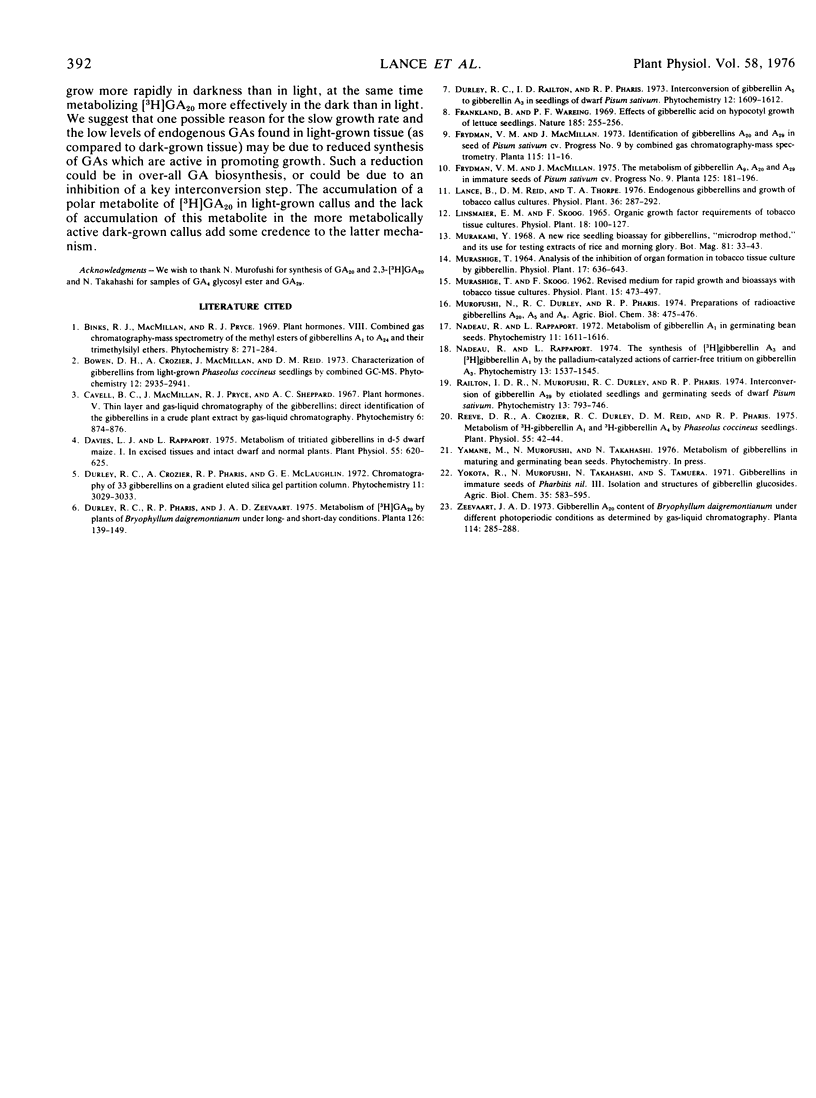
Selected References
These references are in PubMed. This may not be the complete list of references from this article.
- Davies L. J., Rappaport L. Metabolism of Tritiated Gibberellins in d-5 Dwarf Maize: I. In Excised Tissues and Intact Dwarf and Normal Plants. Plant Physiol. 1975 Apr;55(4):620–625. doi: 10.1104/pp.55.4.620. [DOI] [PMC free article] [PubMed] [Google Scholar]
- Reeve D. R., Crozier A. Metabolism of H-Gibberellin A(1) and H-Gibberellin A(4) by Phaseolus coccineus Seedlings. Plant Physiol. 1975 Jan;55(1):42–44. doi: 10.1104/pp.55.1.42. [DOI] [PMC free article] [PubMed] [Google Scholar]


